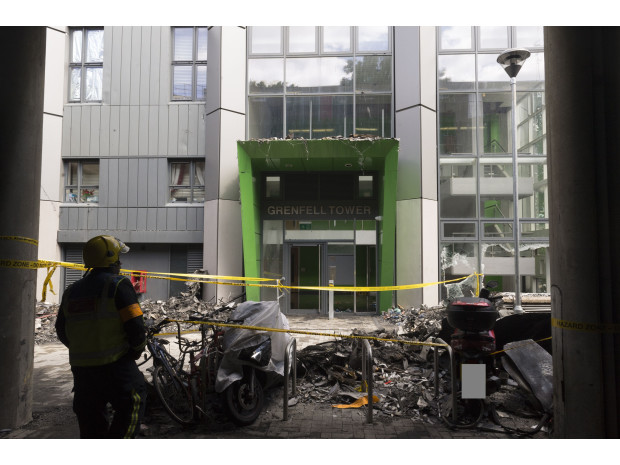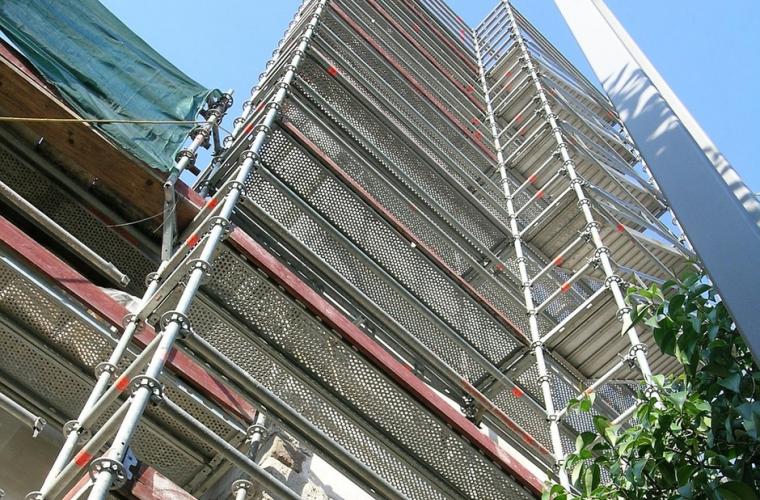A catastrophic series of failures by successive governments, companies and a lack of strategy by the fire service led to the Grenfell Tower fire that killed 72 people in 2017, the final report of the public inquiry states.
Incompetence, dishonesty and greed were the root causes of the tragedy, the inquiry chair said.
The "path to disaster" stretches back decades and how fire safety has been regulated and managed in high rise buildings since the early 1990s.

The damning report, six years in the making, says successive governments “ignored, delayed or disregarded” concerns about the safety of industry practices.
Manufacturers of cladding and insulation products deliberately concealed the fire risks they posed and the way building safety is managed in England and Wales is seriously defective and “complex and fragmented”.
Seven years after the fire took hold through cladding on the West London tower block, inquiry chair Sir Martin Moore-Bick and two panel members highlighted the key failures.
He said not all those he listed bear the same degree of responsibility for the disaster. But the report shows they all contributed to the tragedy, adding that mostly this was through "incompetence - but attributes some of the failings to "dishonesty and greed".
The former judge added that these failings went back over many years, which in part contributed to the amount of time it has taken for the inquiry to conclude.
He says the simple truth is that all of their deaths were avoidable and that that those in Grenfell Tower were badly failed over a number of years in many different ways by those who were responsible for the safety of the building and its occupants.
In the executive summary, the chair states: “We conclude that the fire at Grenfell Tower was the culmination of decades of failure by central government and other bodies in positions of responsibility in the construction industry to look carefully into the danger of incorporating combustible materials into the external walls of high-rise residential buildings and to act on the information available to them.
“In the years between the fire at Knowsley Heights in 1991 and the fire at Grenfell Tower in 2017 there were many opportunities for the government to identify the risks posed by the use of combustible cladding panels and insulation, particularly to high-rise buildings, and to take action in relation to them. Indeed, by 2016 the department was well aware of those risks, but failed to act on what it knew. In particular, it failed to heed the warning of the Environment and Transport Select Committee in December 1999 that it should not take a serious fire in which people were killed before steps were taken to minimise the risks posed by some external cladding systems. It also failed to implement or keep under review the committee’s recommendation that the large-scale test that had recently been developed should be substituted in Approved Document B for previous requirements relating to the fire safety of external cladding systems (thereby abandoning Class 0).
“The department also failed to pay due regard to the striking results of a large-scale test in 2001 involving aluminium composite panels with unmodified polyethylene cores, which burned violently, or to take any steps either to ascertain the extent to which panels of that kind were in use or to warn the construction industry about the risks they posed. It failed even to publish the results of the test.
“On many subsequent occasions the department was made aware that national Class 0 was an inappropriate standard by which to determine the suitability of external wall panels but allowed it to remain as part of the statutory guidance until after the Grenfell Tower fire. It could and should have been removed years earlier.”
There is criticism of the testing and marketing of products (Chapters 15 – 29).
The summary states: “One very significant reason why Grenfell Tower came to be clad in combustible materials was systematic dishonesty on the part of those who made and sold the rainscreen cladding panels and insulation products. They engaged in deliberate and sustained strategies to manipulate the testing processes, misrepresent test data and mislead the market. In the case of the principal insulation product used on Grenfell Tower, Celotex RS5000, the Building Research Establishment (BRE) was complicit in that strategy.
“Those strategies succeeded partly because the certification bodies that provided assurance to the market of the quality and characteristics of the products, the British Board of Agrément (BBA) and Local Authority Building Control (LABC), failed to ensure that the statements in their product certificates were accurate and based on test evidence. UKAS, the body charged with oversight of the certification bodies, failed to apply proper standards of monitoring and supervision.”

Moving forward, the inquiry has issued various recommendations for improving the industry and fire safety.
It calls for a single independent body headed by a construction regulator, reporting to a single Secretary of State.
“The establishment of such a regulator would bring a number of benefits, not least a focal point in driving a much-needed change in the culture of the construction industry,” it states “It would enable information to be shared effectively between those responsible for different aspects of the industry and promote the exchange of ideas. Information on developments in the industry, both in this country and abroad, could be shared more easily between all those interested in it.
“We envisage that such a construction regulator would have sufficient resources to take on the following functions, most of which are currently discharged by one or other of a variety of bodies:
a. the regulation of construction products;
b. the development of suitable methods for testing the reaction to fire of materials and products intended for use in construction;
c. the testing and certification of such products;
d. the issue of certificates of compliance of construction products with the requirements of legislation, statutory guidance and industry standards;
e. the regulation and oversight of building control;
f. the licensing of contractors to work on higher-risk buildings;
g. monitoring the operation of the Building Regulations and the statutory guidance and advising the Secretary of State on the need for change;
h. carrying out research on matters affecting fire safety in the built environment;
i. collecting information, both in this country and abroad, on matters affecting fire safety;
j. exchanging information with the fire and rescue services on matters affecting fire safety;
k. accrediting fire risk assessors;
l. maintaining a publicly available library of test data and publications.
“We are aware that in the period since the Grenfell Tower fire Parliament has passed the Building Safety Act 2022 to regulate work on higher-risk buildings, to impose particular duties on those involved in the construction and refurbishment of such buildings and to establish a Building Safety Regulator responsible for building control and for overseeing standards of competence. However, responsibility for the range of functions identified above remains dispersed.
“We therefore recommend that the government draw together under a single regulator all the functions relating to the construction industry to which we have referred.”





















